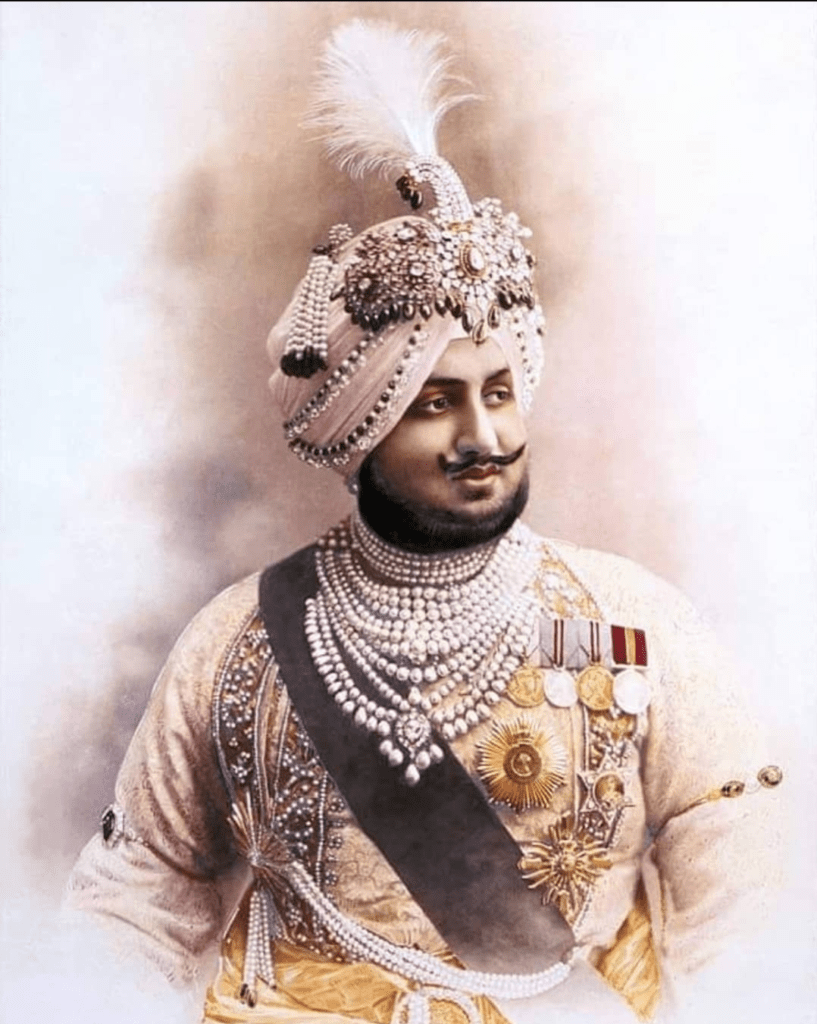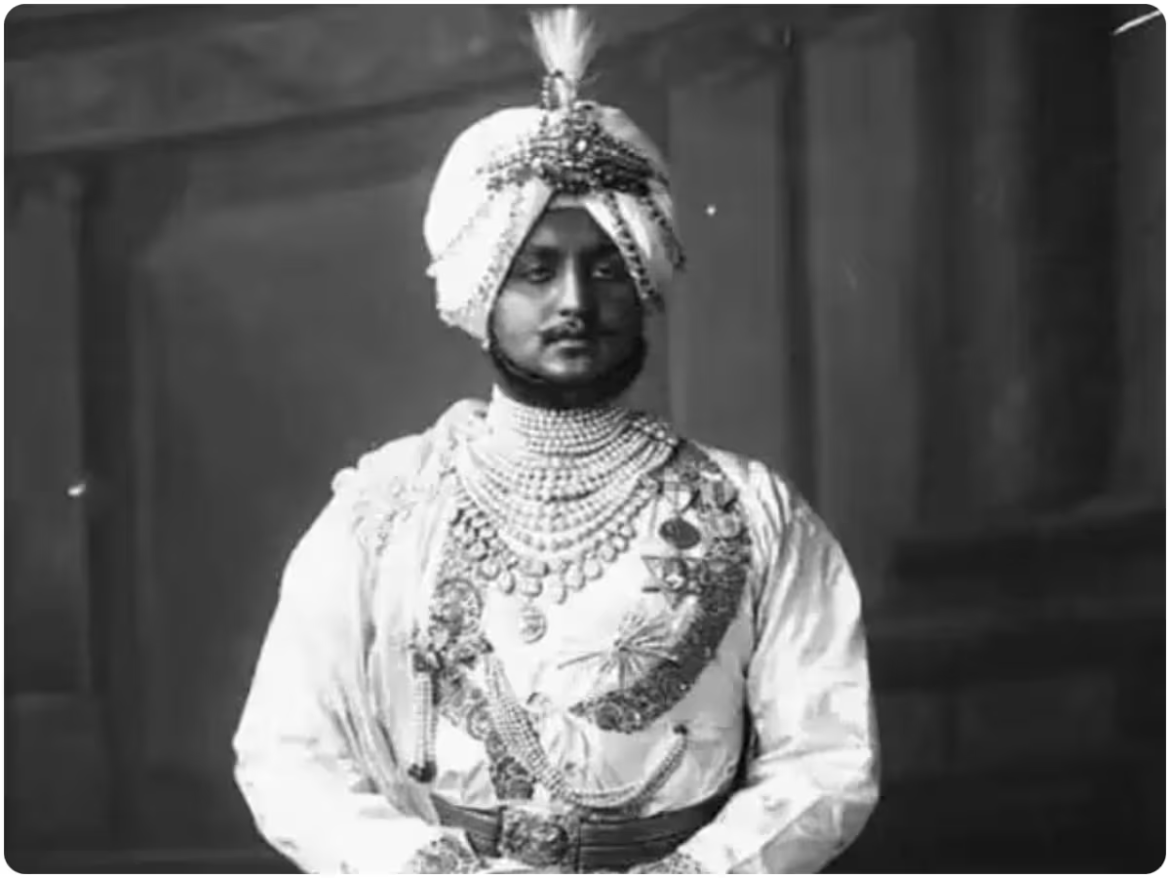AI Generated Summary
- He was a patron of the arts, a supporter of both Indian and international cricket (in fact, the Patiala family is credited with commissioning India’s first Test cricket captain), and a key figure in aligning princely states with British India during the colonial era.
- As an avid cricketer, he was instrumental in the creation of the BCCI (Board of Control for Cricket in India) and helped pave the way for India’s participation in international cricket.
- Bhupinder Singh was one of the founding members of the Chamber of Princes, a body that served as a political platform for India’s princely states to negotiate with British authorities and later, with leaders of independent India.
The Maharaja of Patiala, a title steeped in history, grandeur, and occasional controversy, is synonymous with the princely state of Patiala in Punjab. Yet beyond the conventional tales of palaces and politics, the story of this royal family—and particularly the enigmatic Bhupinder Singh, Maharaja of Patiala from 1900 to 1938—is a fascinating saga of wealth, eccentricity, innovation, and diplomacy. Maharaja Bhupinder Singh’s legacy transcends the corridors of his resplendent Qila Mubarak palace; his life was a living testament to the interplay between tradition and modernity, personal charisma, and political tact.
Bhupinder Singh: A Royal Larger Than Life
Among all the Patiala rulers, Maharaja Bhupinder Singh stands out as a figure whose life could rival the most dramatic of fiction. Born in 1891, Bhupinder ascended to the throne at the age of nine, marking the beginning of a reign that would place Patiala on the world stage. His larger-than-life persona wasn’t just confined to his physical presence—he stood at a towering 6 feet 4 inches—but also his enormous appetite for wealth, art, and luxury. Bhupinder Singh, often dubbed the “King of Bling,” was a collector of everything grand: Rolls-Royces, elaborate jewels, and the finest horses. He commissioned many architectural marvels and contributed to the cultural revival in Patiala, but it was his flamboyant personal lifestyle that truly captured the imagination of those both within and outside of India.

The Maharaja’s flamboyance was perhaps best symbolized by his most famous possession—the Patiala Necklace, a stunning creation by Cartier in 1928. The necklace, studded with almost 3,000 diamonds and featuring a 234.69-carat De Beers diamond, was one of the most expensive pieces of jewelry ever crafted. To this day, the tale of the necklace’s mysterious disappearance in the 1940s and its partial rediscovery in 1982 reads like the script of a Hollywood thriller.
Yet, Maharaja Bhupinder Singh’s wealth wasn’t merely a personal indulgence. It was also his tool for diplomacy and power. He was a patron of the arts, a supporter of both Indian and international cricket (in fact, the Patiala family is credited with commissioning India’s first Test cricket captain), and a key figure in aligning princely states with British India during the colonial era. He maintained a lavish court and often entertained European dignitaries, making Patiala a cultural hub where East and West met in glittering soirées.
The Patiala Dynasty’s Military Might
Maharaja Bhupinder Singh’s legacy also extended to military modernization. Unlike some of his princely peers, who were content with ornamental troops, Bhupinder took a deep interest in military matters. His fascination with military power was reflected in the formation of the Patiala State Force, which was among the best-equipped private armies of the time. The Maharaja himself held honorary ranks in the British Army, including the rank of Major General. Under his command, the Patiala forces contributed significantly to British campaigns during both World War I and World War II.

His strategic support to the British crown during the wars won him favor, but it also earned him a reputation as a pragmatic ruler, skilled in walking the tightrope between Indian nationalism and British allegiance. Bhupinder Singh was one of the founding members of the Chamber of Princes, a body that served as a political platform for India’s princely states to negotiate with British authorities and later, with leaders of independent India.
A Champion of Sports and Aviation
Despite his powerful position, Maharaja Bhupinder Singh’s interests were surprisingly forward-thinking and global in scope. He is often remembered as one of the earliest champions of Indian sports. As an avid cricketer, he was instrumental in the creation of the BCCI (Board of Control for Cricket in India) and helped pave the way for India’s participation in international cricket. Patiala’s famous cricket team frequently hosted British and Indian players, making the region a nexus for the sport. Bhupinder Singh also helped develop polo, hockey, and even wrestling in the country.

The Maharaja’s influence wasn’t limited to earthbound activities. He was among the first Indians to take to the skies, owning one of India’s earliest private planes. His interest in aviation was no fleeting fancy—he became the first Maharaja to acquire a personal fleet of aircraft and played a pivotal role in encouraging India’s fledgling aviation industry. This blend of forward-thinking enterprise and royal flair remains one of the less-discussed, but highly significant aspects of his rule.
The Enigmatic Maharaja and His Women
Beyond his public persona, Bhupinder Singh’s personal life often became the subject of whispered gossip. Known to have had many wives and consorts, his harem was one of the largest among Indian royalty. While such practices were not uncommon among Indian royals, the Maharaja’s dalliances went beyond convention. It is said that he had over 300 concubines and was constantly surrounded by beautiful women, a fact that only added to his legendary status as a larger-than-life figure. He fathered numerous children, and his heir, Maharaja Yadavindra Singh, eventually took over the throne after Bhupinder’s death in 1938.
Bhupinder Singh’s opulent lifestyle, particularly his relationships, garnered attention and criticism alike. Yet, he remained unperturbed, living his life on his own terms. He embodied the contradictions of his time: a ruler balancing modernity with tradition, colonial subjugation with personal power, and royal decadence with political astuteness.
Patiala After Bhupinder Singh: A Changing Legacy
Maharaja Bhupinder Singh passed away in 1938, but his legacy continued through his son, Maharaja Yadavindra Singh, who played a key role in post-colonial India. Yadavindra was instrumental in the integration of princely states into independent India and served as an ambassador and diplomat for the newly formed Indian republic.
However, as India transitioned into a democracy, the power and influence of the Patiala royal family, like many others, gradually diminished. The title of Maharaja, once brimming with political clout, now became largely ceremonial. Yet, the enduring legacy of Bhupinder Singh’s reign—marked by grandiose wealth, political tact, and a deep commitment to art and sports—remains etched in the annals of Indian history.




